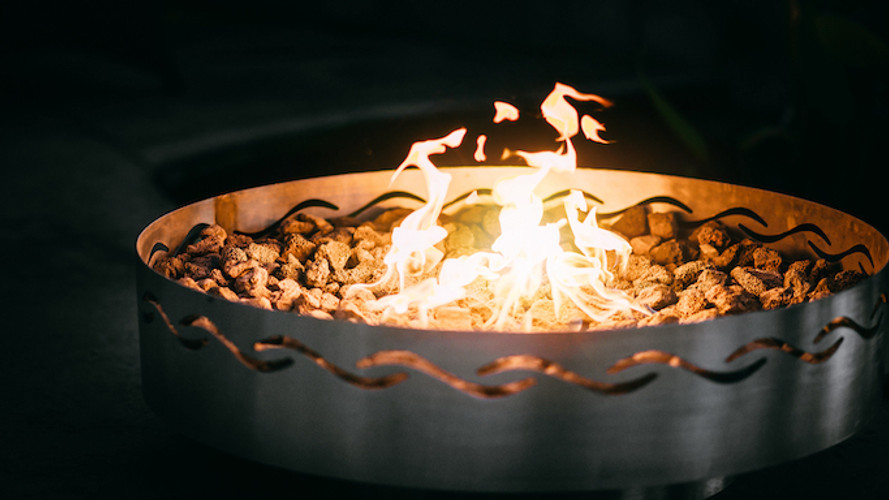Posted by Alyssa B. on Oct 17th 2024
Your Ultimate Guide: Best Wood to Burn in a Fire Pit
Your Ultimate Guide to the Best Wood to Burn in a Fire Pit
You're about to light a fire in your fire pit, but before you do, you need to know what the best wood to burn in a fire pit is. While burning any wood lying around is tempting, a cozy and inviting fire pit can quickly go south when you don't select the right fuel. So let the team at Fire Pit Art help guide you to ensure an enjoyable and safe fire for your summer night!
Summary
- Hardwood (such as oak, maple, or birch) burns slower, cleaner, and produces a longer-lasting fire.
- Softwood (pine or cedar) ignites quickly and produces a vibrant flame.
- We recommend softwoods for kindling and hardwoods for the bulk of your fire's fuel.
- Never burn driftwood, treated or painted wood, wood with vines, green (freshly cut) wood, or allergenic wood (poison ivy, poison oak)
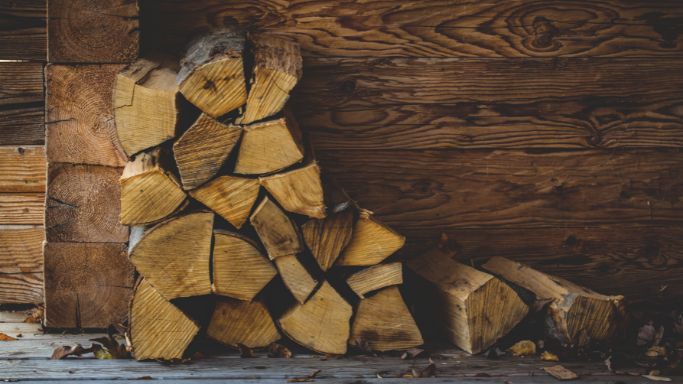
Types of Wood for Fire Pits
When selecting the best wood to burn in a fire pit, it's important to know what's available and the differences between them. Generally, you can categorize firewood into two main types: hardwood and softwood. Hardwood, like oak, maple, or birch, burns slower and produces a longer-lasting fire. Softwood, on the other hand, like pine or cedar, ignites quickly and creates a vibrant flame. Both types have pros, but it's also essential to consider their cons.
Safe and Suitable Firewood
Not all wood is equal regarding safety and suitability for burning in a fire pit. While all types of wood will burn, not all will burn safely. Here are some key things to consider when selecting the best wood for your fire pit.
Seasoning
It's best to use something other than green wood (freshly cut wood) when selecting fuel for your fire pit. Green or newly cut wood contains a high moisture content, making it difficult to burn efficiently. Instead, we suggest using seasoned wood. Seasoned wood is wood that you cut and then dry for at least six months. The drying process allows the wood to burn more easily, produces less smoke, and generates more heat.
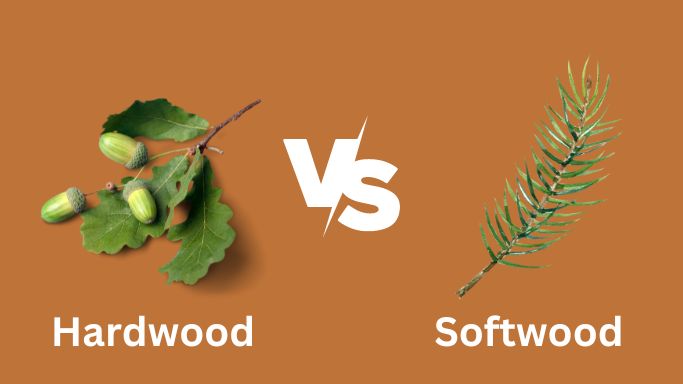
Hardwood vs. Softwood
As mentioned, you can use hardwood and softwood in fire pits. Each has its own pros and cons:
Hardwood
- It tends to be denser, so it burns longer
- Difficult to light
- Burns slowly and leaves behind plenty of coals to assist in restarting the fire.
- Burn cleaner, meaning the wood creates less smoke and leaves behind less residue than other woods.
- Due to hardwoods' characteristics, you will have to attend to this fire less often.
Softwood
- Lighter
- Ignites more quickly
- Usually, it burns fast and will leave behind a few coals to assist in restarting the flame.
- Often create a large amount of smoke and flying ash.
- Due to softwoods' characteristics, you often need to attend to this fire more frequently to ensure everyone stays safe.
Local Regulations
Check with local regulations and authorities to ensure compliance with any rules or restrictions on burning wood in residential areas. Some locations have specific guidelines, especially regarding air quality and the type of wood that you can burn.
Woods To Never Burn In A Fire Pit
If you want to ensure a safe and enjoyable fire pit experience, we highly recommend staying away from the following types of wood:
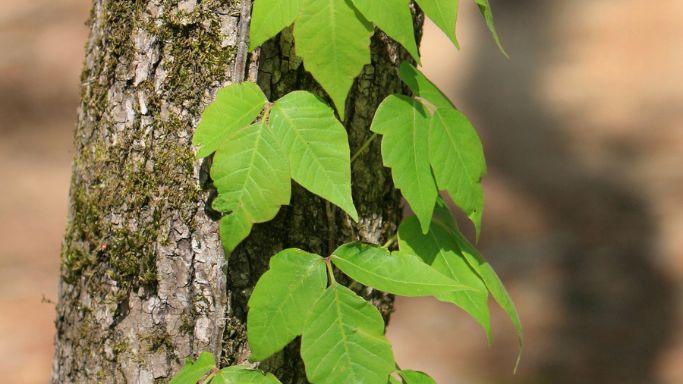
Wood with Vines
If you're in a situation where you are collecting firewood for your fire pit, never select pieces that have vines of flowers growing around them or out of them. While most of the vines and flowers you find draped on wood are safe, that isn't always the case. Use extreme caution when selecting this source of fuel. You want to ensure you know your plants and if you're looking at a harmless English or poison ivy.
If poisonous plants are on the wood (such as oleander, poison oak, poison sumac, or poison ivy), burning these plants sends the poison into the air. Your family and friends can inhale this toxic smoke resulting in significant health risks, including possible death.
Poisonous or Allergenic Wood
In addition to not burning wood with any leaves, vines, or unknown flowers, we recommend you stay away from wood varieties known to be toxic or cause allergic reactions, such as poison ivy, poison oak, or oleander. Burning these woods releases harmful substances into the air that can be dangerous when inhaled.
Softwoods with High Resin Content
Softwoods like pine or fir with high resin content can produce excessive smoke, sparks, and popping, leading to potential safety hazards. In addition, chances are you'll walk away from an overly smokey evening ready to wash your campfire sweater.
Wood with Excessive Moisture
As mentioned, you should avoid green or unseasoned wood due to its high moisture content. The moisture makes it difficult to ignite, resulting in more smoke and less efficient burning. Trying to burn green wood often results in a frustrating and cold night as you fight the flames to keep working.
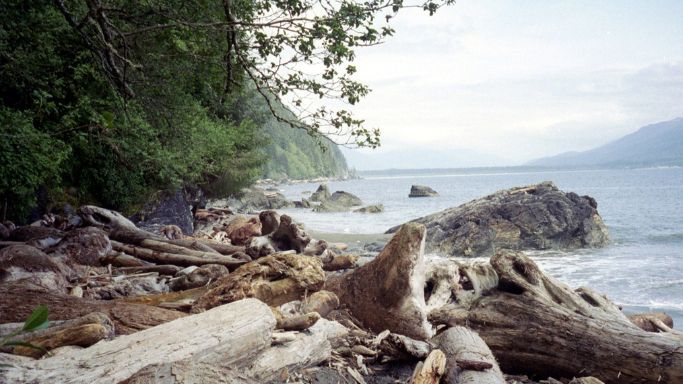
Driftwood
Salt and water tend to saturate driftwood. The moisture locked into this wood creates a difficult ignition, and the salt-water saturation may release harmful chemicals when burned. The EPA warns against burning driftwood due to the possible toxicity it may cause.
Construction Wood
You should never use construction materials such as firewood. Most construction lumber gets dipped in chemicals to prevent temporary mildew during the construction process. Pine and other processed lumber are the primary wood sources used in construction wood. Burning these woods can cause harmful toxic smoke to those around them.
Treated or Painted Wood
Never burn chemical-treated wood, such as pressure-treated or painted wood. When burned, these chemicals release toxic fumes, posing health risks to you and your guests.
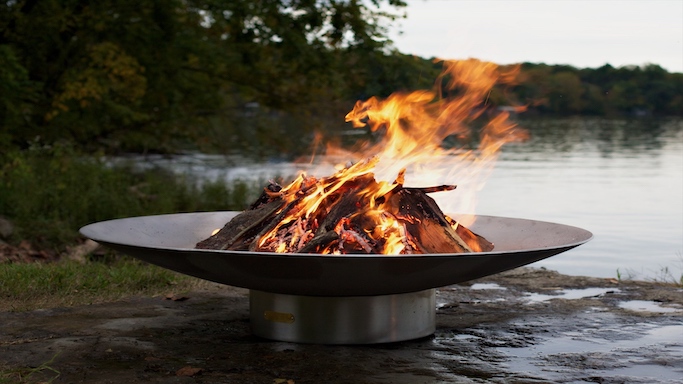
Best Practices for Fire Pit Wood Burning
To make the most of your fire pit experience and maintain safety, here are some best practices to follow when it comes to your fire pit fuel choices:
Store Wood Properly
If you have space, store your firewood in a dry and ventilated area, ideally elevated from the ground. This helps in proper seasoning and keeps the wood dry for efficient burning. In addition, storing your wood on a fire pit rack can prevent mold and bugs from forming on your wood.
Use Kindling
Start your fire with small pieces of dry twigs, newspaper, or commercially available fire starters to ignite the larger logs effectively. We advise using hardwood for the bulk of your fire and softwood for your kindling, as softwood ignites quickly and easily and burns hot and fast.
Monitor the Fire
Always practice fire pit safety, and keep a watchful eye on your fire pit, ensuring it remains contained within the designated area. Always have a fire extinguisher, sand, or water nearby for emergencies.
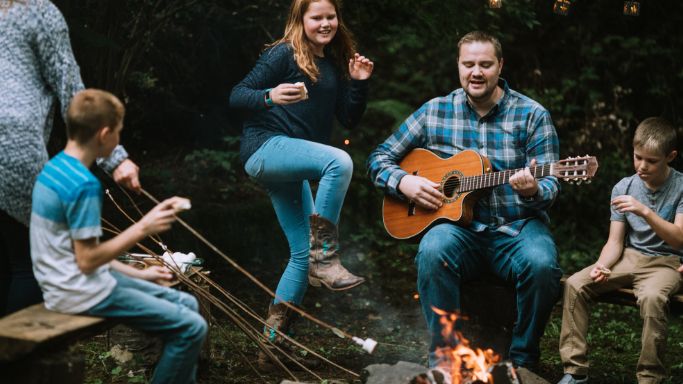
Stay Safe, Burn Safe
While fire pits offer warmth and ambiance, being mindful of the wood you choose to burn is crucial. Not all wood is suitable, and using the wrong type can pose safety risks, impacting your family's and the environment's health. By considering factors such as seasoning, wood type, and local regulations, you can ensure a safer, cleaner, and more enjoyable fire pit experience for yourself and your guests. Remember, choosing the best wood is a great way to create memorable moments around the fire while prioritizing safety and environmental sustainability.
Follow Fire Pit Art on Facebook, Instagram, YouTube, and Pinterest!

